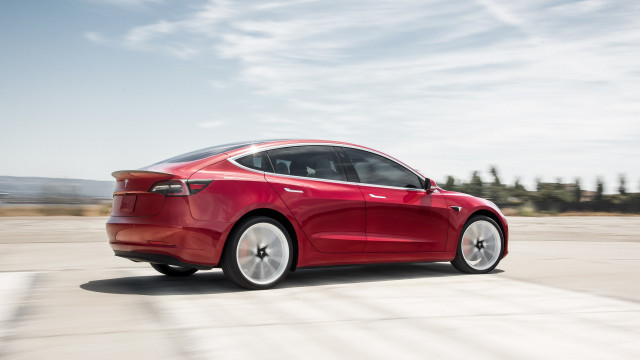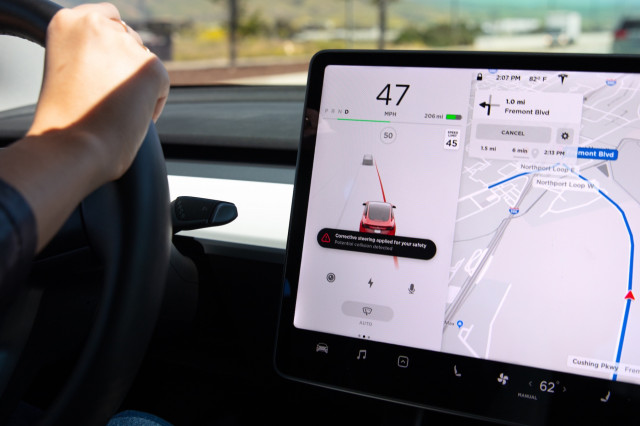
2019 Tesla Model 3 Performance
On its way to rolling out full self-driving, Tesla will use the technology to add two more basic safety features to all its cars, the company announced on Thursday.
Tesla's Autopilot system can often track lanes better than most other self-driving systems—and occasionally not. But the cars have to be equipped with Autopilot and drivers have to have the Autopilot system engaged for that ability to work.
Now the company is making the active steering features of Autopilot standard on all its cars for safety's sake. Tesla calls the features Lane Departure Avoidance and Emergency Lane Departure Avoidance.
MUST READ: Musk aims to transform Tesla into self-driving robo-taxi company
Unlike Autopilot, the systems are designed to work in the background, while the driver is actively driving the car.
The Lane Departure Avoidance systems add to the standard Lane Departure Warning system already standard on Teslas. If the car's cameras determine it is actively straying from its lane, between 25 and 90 mph, the car can nudge the steering to bring it back in line in addition to warning the driver. The Lane Departure Warning System only vibrated the steering wheel and provided visual warnings.
The difference between Lane Departure Avoidance and Emergency Lane Departure Avoidance is that the first system intervenes earlier and more often, and drivers have to turn it on for it to work. Emergency Lane Departure Avoidance is activated automatically every time the car turns on and intervenes later (and less often) but more forcefully if the driver allows the car to approach a lane-line too closely or quickly without using a turn signal, or if the car's sensors detect an imminent collision. Drivers can also override this system or turn it off, but it resets as soon as the car restarts.

Tesla Lane Departure Avoidance screen
Many other automakers make such active lane control systems standard in varying degrees. Such active lane control systems have been shown to reduce accidents resulting from cars running off the road, which can lead to rollovers and are among the most severe types of crashes.
CONSIDER THIS: Tesla Full Self-Driving will still require drivers when it arrives later this year
Tesla says the systems will be pushed out to existing cars, starting Thursday, via an over the air update, although an update some Tesla owners received Thursday night did not include the system.
In a blog announcing the systems, the company said, "We believe that lane-keeping and hands-on monitoring can be extremely effective to prevent accidents. These features apply some of the best parts of Autopilot to help all of our customers stay engaged and in their lane in order to avoid collisions when Autopilot is not in use."
CHECK OUT: No more turn-signal affirmation for Tesla Navigate on Autopilot
More broadly, the move represents a branding shift for Tesla away from the term Autopilot toward following the practices of other major automakers, making Level 2 driver assist features standard safety items and saving promises of fully autonomous Level 4 and Level 5 self-driving for the future.
Tesla said last week at an Autonomy Day event that it sees that Full Self-Driving Capability future coming sooner than many other traditional automakers—as soon as the end of this year for the capability, said CEO Elon Musk—though it may still require several years to win legal approval.